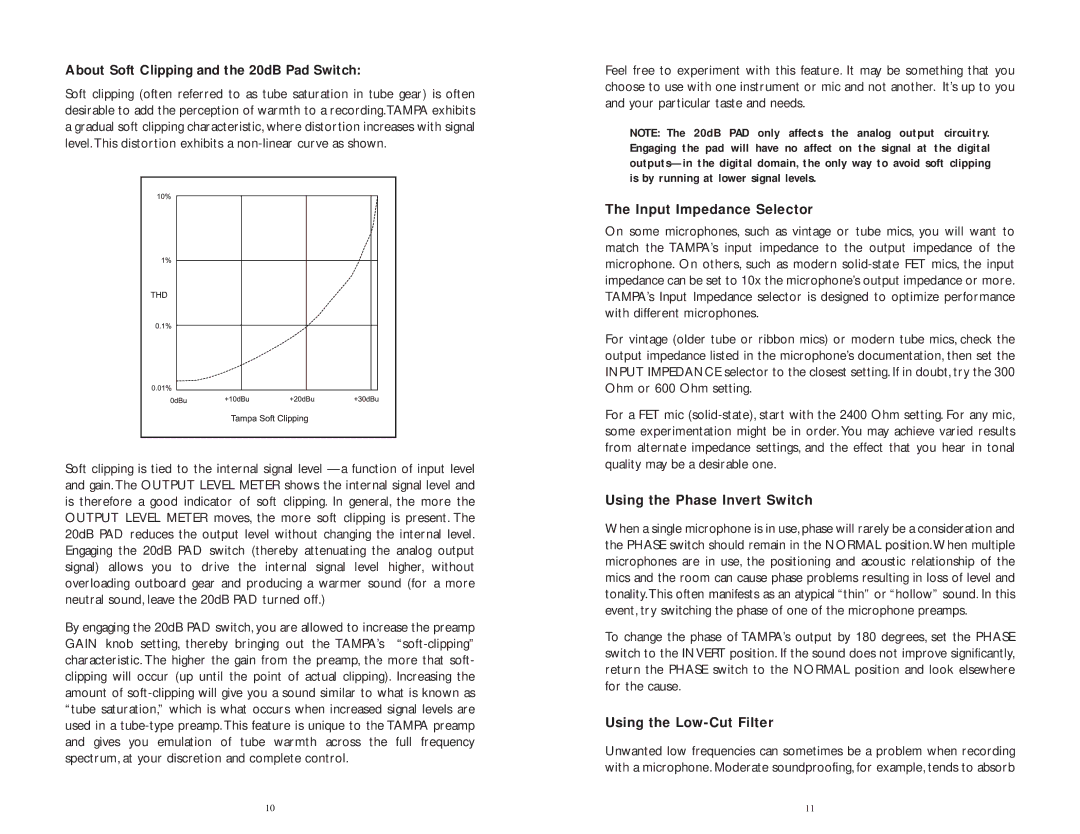
About Soft Clipping and the 20dB Pad Switch:
Soft clipping (often referred to as tube saturation in tube gear) is often desirable to add the perception of warmth to a recording.TAMPA exhibits a gradual soft clipping characteristic, where distortion increases with signal level.This distortion exhibits a
Soft clipping is tied to the internal signal level
By engaging the 20dB PAD switch, you are allowed to increase the preamp GAIN knob setting, thereby bringing out the TAMPA’s
Feel free to experiment with this feature. It may be something that you choose to use with one instrument or mic and not another. It’s up to you and your particular taste and needs.
NOTE: The 20dB PAD only affects the analog output circuitry. Engaging the pad will have no affect on the signal at the digital
The Input Impedance Selector
On some microphones, such as vintage or tube mics, you will want to match the TAMPA’s input impedance to the output impedance of the microphone. On others, such as modern
For vintage (older tube or ribbon mics) or modern tube mics, check the output impedance listed in the microphone’s documentation, then set the INPUT IMPEDANCE selector to the closest setting. If in doubt, try the 300 Ohm or 600 Ohm setting.
For a FET mic
Using the Phase Invert Switch
When a single microphone is in use, phase will rarely be a consideration and the PHASE switch should remain in the NORMAL position.When multiple microphones are in use, the positioning and acoustic relationship of the mics and the room can cause phase problems resulting in loss of level and tonality.This often manifests as an atypical “thin” or “hollow” sound. In this event, try switching the phase of one of the microphone preamps.
To change the phase of TAMPA’s output by 180 degrees, set the PHASE switch to the INVERT position. If the sound does not improve significantly, return the PHASE switch to the NORMAL position and look elsewhere for the cause.
Using the Low-Cut Filter
Unwanted low frequencies can sometimes be a problem when recording with a microphone. Moderate soundproofing, for example, tends to absorb
10 | 11 |
